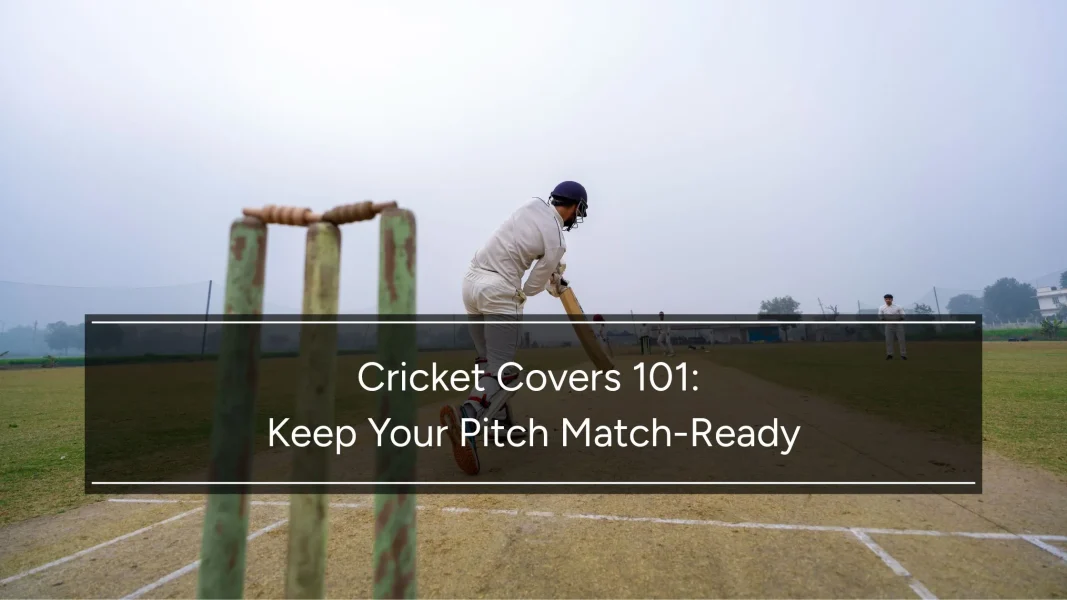Non-Turf Cricket Case Study
Summary Stuart Canvas was approached by a private client who required a bespoke Non-Turf Training Facility to be...

Cricket pitch covers have become an important part of the sport, but why?
Quite simply, it comes down to keeping the pitch well-maintained in controlled conditions. If a pitch is not protected from the rain, it can become too wet, which can affect the ball’s motion and reduce the amount of bounce the ball has.
At the same time, if a pitch is not protected from the sun and becomes too dry, the ball can damage the pitch. As the ball leaves the bowler’s hands and makes its way to the batsman, it will first make contact with the pitch. If the pitch is too dry, the ball will create cracks in its surface that can make it uneven.
Playing on an uneven surface can make the ball behave differently. It will start bouncing randomly, which makes it harder for the bowler to control it.
Now we know the importance of cricket covers, what else do we need to know to keep your pitch match ready?
There are four main types of cricket pitch covers available. These are:
In your average cricket ground, the two most common types that are used are roll-on cricket covers and mobile cricket covers. Let’s take a closer look at these.
Roll-on cricket covers are a firm favourite among county clubs and schools. They are lightweight and easy to use but very durable. Their wheeled frame means they can be put in place in minutes to prevent any damage to the pitch that could affect the rest of the match. They can usually be operated by just two people, meaning that instant protection is there when the rain begins.
Many schools and clubs have more than one pitch and, therefore, need multiple covers to prevent them from becoming too wet or too dry. Mobile cricket covers offer that flexibility. Depending on your set-up, it may be possible to protect two or three pitches at once. Plus, they often come with extra features such as gutters to prevent rainwater from pooling and side covers that can be branded to your team or club.
Knowing which cricket pitch cover is best for you will depend on your needs. Here are a few points to consider to help you get started:
Also Read: Cricket Pitch Covers: Do they really make a difference?
Each time you use your cricket covers, it’s good practice to clean them to keep them in good condition. Mud and water can soon build up, so giving them a wipe-over and letting them dry can prevent mould and mildew. Also, check the frames and tighten the bolts to ensure they’re safe and in good working order. With the unpredictable British weather, you need your cricket pitch covers to be ready to go at a moment’s notice.
Cricket pitch covers can give groundsmen and players peace of mind that whatever the weather decides, play can continue without affecting gameplay. By keeping the pitch surface at the right conditions, cricket covers can stop the surface from becoming too wet or too dry.
Investing in cricket pitch covers might seem like a significant investment, but if you make the right choice, it will be worth it and provide pitch protection for many years to come. It can also help add value to your club by having fewer match cancellations and a more professional image that attracts players and potential sponsors.
Additionally, protecting your pitch can help reduce maintenance and repair costs, as the surface will stay in good condition if protected against the elements.
No matter the type of cricket cover you opt for, they all offer some level of protection for the surface and can help you keep your pitch match-ready. At Stuart Canvas Group, we’ve offered ground protection services for more than 50 years. If you are looking for cricket covers for your ground or club, please browse our range and get in touch if you have any questions.
